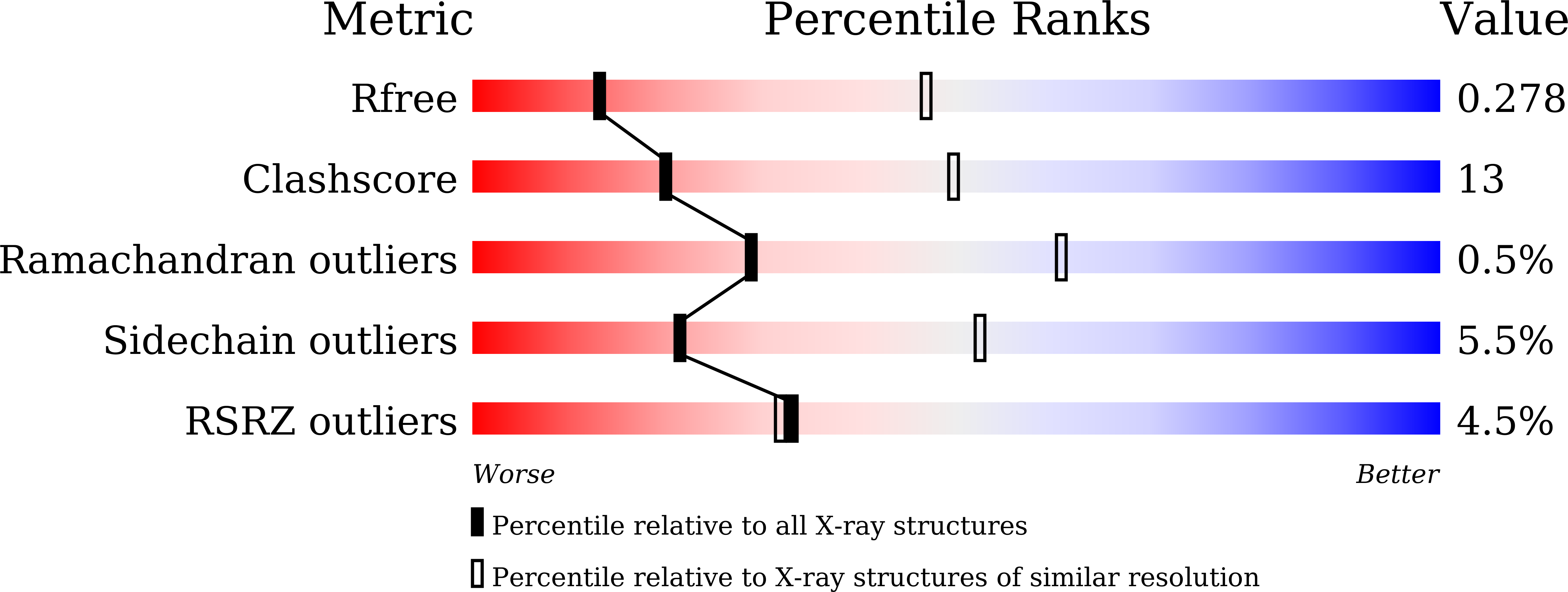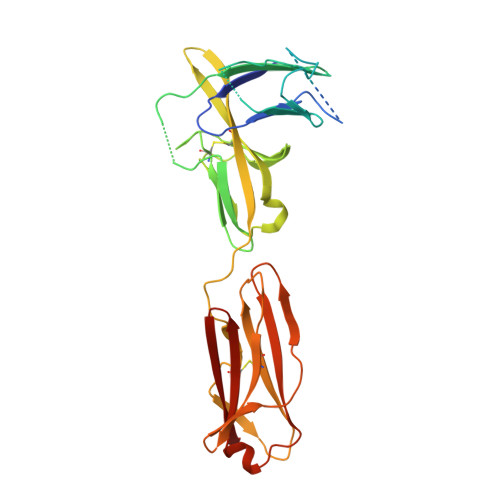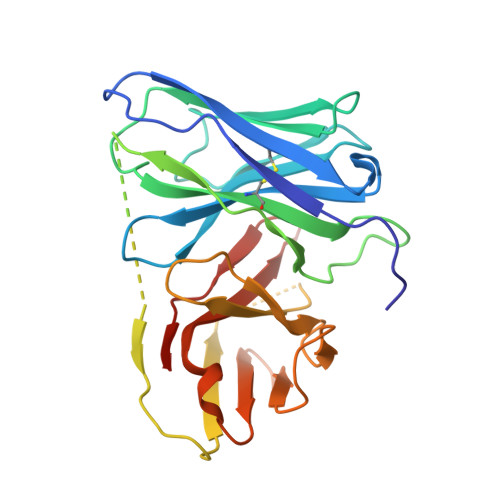A Synthetic Human Antibody Antagonizes IL-18R beta Signaling Through an Allosteric Mechanism.
Liu, S., Miersch, S., Li, P., Bai, B.X,, Liu, C.C., Qin, W.M., Su, J., Huang, H.M., Pan, J., Sidhu, S.S., Wu, D.H.(2020) J Mol Biol 432: 1169-1182
- PubMed: 31954129
- DOI: https://doi.org/10.1016/j.jmb.2020.01.012
- Primary Citation of Related Structures:
6KN9 - PubMed Abstract:
The interleukin-18 subfamily belongs to the interleukin-1 family and plays an important role in modulating innate and adaptive immune responses. Dysregulation of IL-18 has been implicated in or correlated with numerous diseases, including inflammatory diseases, autoimmune disorders, and cancer. Thus, blockade of IL-18 signaling may offer therapeutic benefits in many pathological settings. Here, we report the development of synthetic human antibodies that target human IL-18Rβ and block IL-18-mediated IFN-γ secretion by inhibiting NF-κB and MAPK dependent pathways. The crystal structure of a potent antagonist antibody in complex with IL-18Rβ revealed inhibition through an unexpected allosteric mechanism. Our findings offer a novel means for therapeutic intervention in the IL-18 pathway and may provide a new strategy for targeting cytokine receptors.
Organizational Affiliation:
Laboratory of Antibody Engineering, Shanghai Institute for Advanced Immunochemical Studies, ShanghaiTech University, Shanghai, China.

















